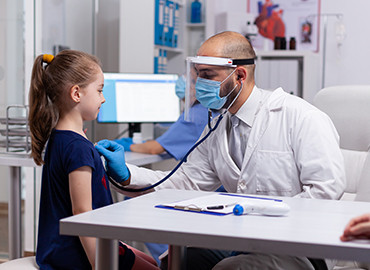Opportunities in the Medical Device Business in Bangladesh

Bangladesh’s vibrant economy and flourishing healthcare sector make it an exciting prospect for the medical device industry. The evolving healthcare infrastructure, driven by a growing middle class, increased healthcare spending, and government initiatives, signals ample opportunities. This blog post delves into Bangladesh’s thriving medical device business landscape and offers a concise guide to establishing a business in this flourishing market. Explore the promising potential and embark on an inspiring journey in Bangladesh’s dynamic healthcare industry!
Market Overview

Bangladesh’s healthcare industry has experienced significant growth during the last decade. The pharmaceutical industry has thrived, with 98 percent of the domestic demand for drugs produced in the country. However, healthcare service delivery and the medical devices and equipment industry are still developing, with 92 percent of medical devices and equipment imported. Although the medical devices sector plays a critical role in improving healthcare access, the prevailing ecosystem needs particular intervention to drive the manufacturing of medical devices in Bangladesh.
The study found significant potential for expanding the manufacturing of medical devices and equipment in Bangladesh. Demand-side dynamics provide an unprecedented opportunity for the manufacturing of medical devices in Bangladesh, with the market size expected to cross USD 800 million by 2025. Health services development is supported by increasing income and affordability among the population, likely leading to higher demand and utilization of healthcare services. Rising awareness about early disease detection and the growing prevalence of chronic diseases drive the demand for healthcare services.
Moreover, the overall growth in healthcare infrastructure, driven by the government’s plans to expand healthcare delivery channels, is expected to increase the per capita consumption of medical devices and equipment. To promote the manufacturing of medical equipment/devices in the short- to mid-term, it is essential to proactively attract both foreign and local investments to this sector and also pay attention to the existing investors in the industry to facilitate re-investment plans (expanding or diversification of existing businesses) of current investors/manufacturers, while also making an effort to develop skills/technology of local human resources for product development and manufacturing, ideally through partnership or collaboration with foreign manufacturers. At the same time, it is essential to ease the regulatory and operational environment specific to this sector to ensure a predictable and smooth establishment of investments.
Key Opportunities in the Bangladesh Market
Growing Healthcare Infrastructure: The Bangladeshi government invests in healthcare infrastructure, including new hospitals and clinics. This expansion creates a significant demand for medical devices and equipment.
Rising Middle Class: With a growing middle class, there is an increasing demand for quality healthcare services. This demographic is more willing to spend on advanced medical treatments and technologies, driving the need for innovative medical devices.
Technological Advancements: Bangladesh is adopting advanced medical technologies. There is a growing preference for state-of-the-art equipment that can provide accurate diagnoses and effective treatments.
Regulatory Support: The Bangladeshi government has eased regulations to facilitate the import and export of medical devices. This regulatory support makes it easier for foreign companies to enter the market.
Local Manufacturing: There is potential for local manufacturing of medical devices, which can reduce costs and increase accessibility. The government is encouraging local production through various incentives and support programs.
While the opportunities are significant, there are also challenges that businesses need to navigate.
Steps to Open a Medical Device Business in Bangladesh
Market Research: Conduct thorough market research to understand the demand, competition, and regulatory landscape. Identify the key segments and regions with the highest potential.
Business Plan: Develop a comprehensive business plan outlining your business model, target market, marketing strategy, and financial projections. This plan will serve as a road map for your business.
Regulatory Compliance: Ensure your products comply with Bangladesh’s Directorate General of Drug Administration (DGDA) regulatory requirements. Obtain the necessary licenses and approvals before launching your products.
Local Partnerships: Establish partnerships with local distributors, healthcare providers, and other stakeholders. These partnerships can help you navigate the local market and expand your reach.
Manufacturing and Supply Chain: If you plan to manufacture locally, set up a manufacturing facility that meets the required standards. Develop a robust supply chain to ensure timely product delivery.
Marketing and Sales: Implement a marketing strategy highlighting your products’ unique features and benefits. Utilize both traditional and digital marketing channels to reach your target audience.
Customer Support: Provide excellent customer support to build customer trust and loyalty. Offer training and support to healthcare providers to ensure the effective use of your products.
Continuous Improvement: Always aim for progress! Stay connected with the market and customers, and use their feedback to enhance your products and services.
In conclusion, the medical device market in Bangladesh presents significant opportunities for businesses willing to navigate the challenges and invest in this growing sector. With the right strategy, regulatory compliance, and local partnerships, companies can access this lucrative market and contribute to improving healthcare services in Bangladesh.


